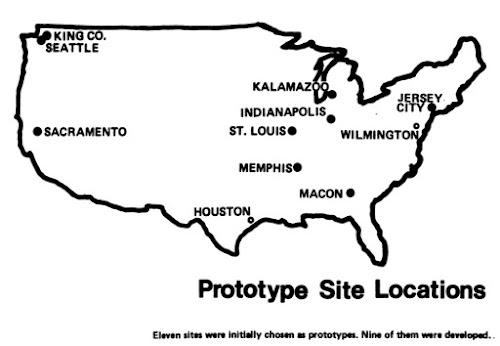Protagonists have had a significant and advocating role in the history of prefabrication. The storied narrative of off-site construction is full of operatives, often coming from parallel industries to architecture and understanding the prospects for increasing productivity in a long-stagnating construction sector. By federating politics, funds and trade associations, industry leaders have been central to channelling romanticized transformations in the construction industry.
The following ten blog posts will look into several selected proposals for Operation Breakthrough (1969), established by the department of Housing and Urban Development as an initiative synchronized with the Fair Housing Act, a framework for affordable housing and its desegregation in America. The main proponent of Operation Breakthrough, George Romney, embodied the posture of an industrial operative encouraging new materials, methods and opportunities for increased efficiencies and productivity in bringing about low-cost housing for all.
From lobbying for Alcoa and aluminum, steering the Automotive Committee for Air Defense or being named Chief Executive of American Motors, George Romney was well versed in manufacturing potentials and parameters. After being nominated by Richard Nixon as Secretary of Housing and Urban Development, Romney initiated one of the largest industrial based cooperative efforts to stimulate new ideas for affordable housing. Linked to his experience as a lobbyist, Romney challenged builders, manufactures and professionals to come up with efficient factory produced building systems. Although none of the proposals were massively produced or built, the program did succeed in showcasing the potential for cross-pollination between industry players.
From over a hundred proposals, 22 systems and eleven test sites were set up to build and showcase prototypes. From conventional to utopian and fascinating proposals Operation Breakthrough highlighted the type of cooperative capitalism that Romney preached for and is underscored by the consortiums set up to achieve each integrated application. At once Inspired by and critical of building programs in post-war Japan and Europe, the program encouraged streamlined procurement, centralized design, mass-production along with the concept of open systems to achieve product variety based on component repetition. Not just another failure in the history of industrialized architecture, some of the proposals were perhaps too innovative for the American public who had comfortably settled in the timber platform frame as the reflection of their basic on-site construction culture of building.
 |
| Operation Breakthrough test sites |
No comments:
Post a Comment